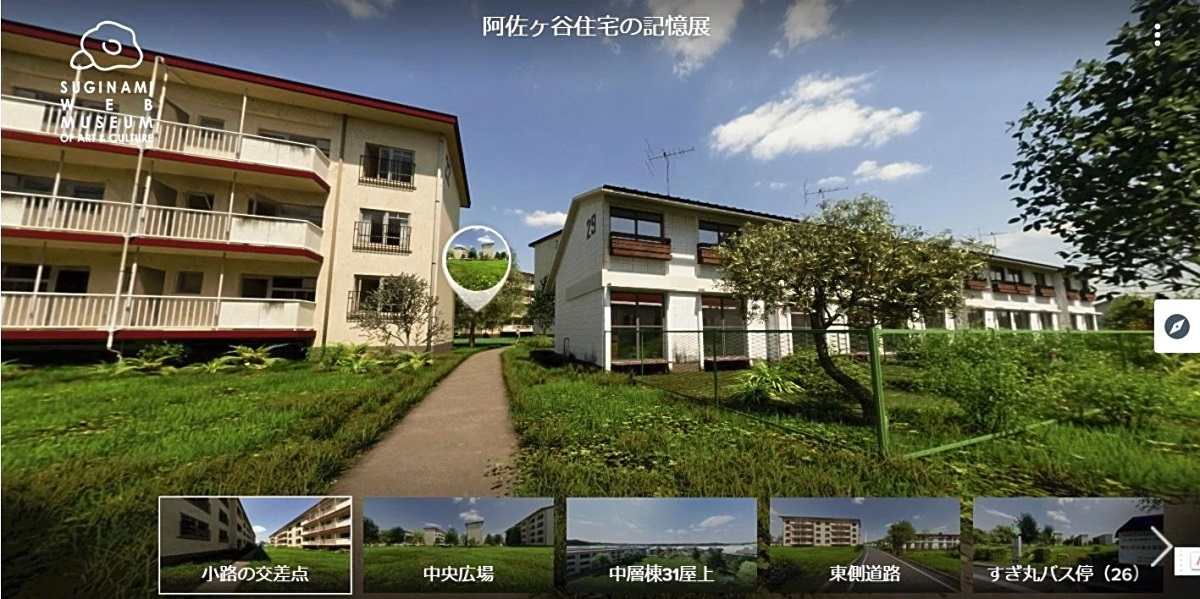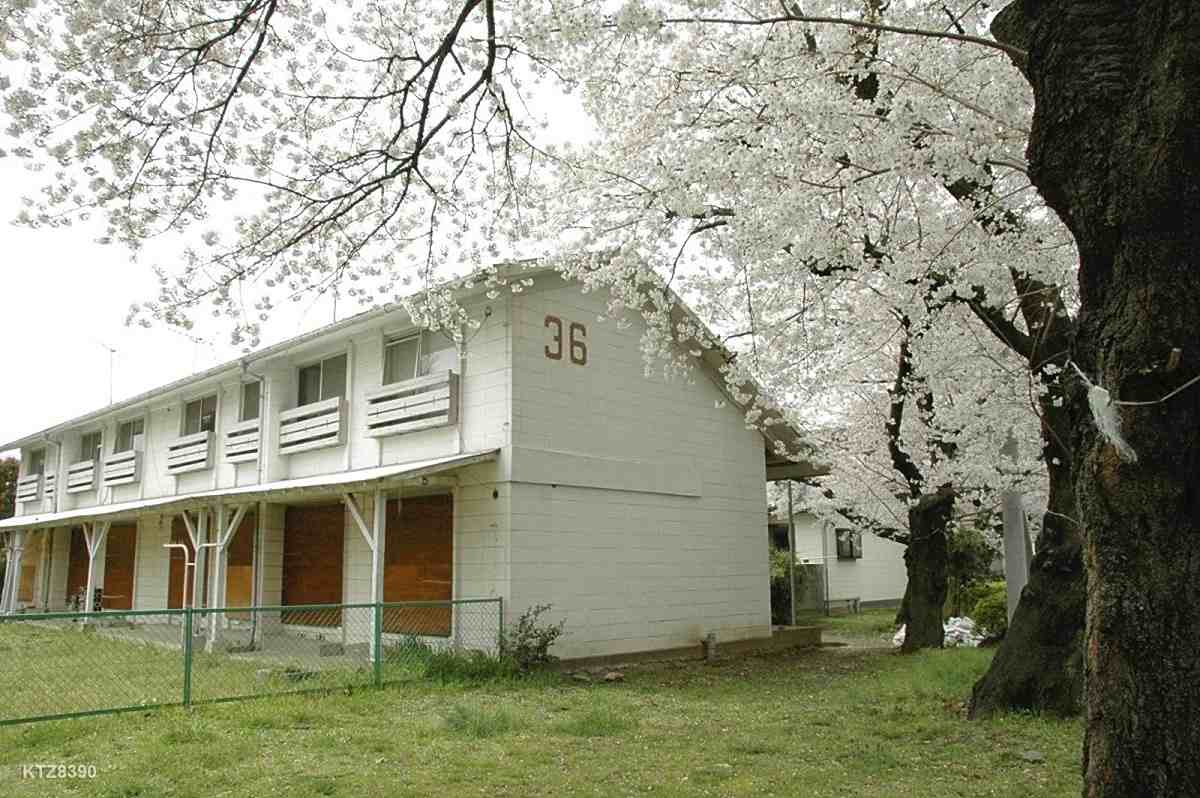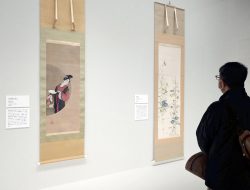
A computer-generated reproduction based on photos of the now-demolished Asagaya Jutaku housing complex shown in the online exhibition “Asagaya Jutaku no Kiokuten”
10:30 JST, February 16, 2023
An online, computer-generated reproduction of a defunct Tokyo housing complex has been wowing website viewers.
Carpeted in lush greenery, the now-demolished Asagaya Jutaku complex in the Asagaya district of Tokyo’s Suginami Ward was known as a “miracle housing project,” and was a world away from the conventional image of such complexes as being uniform and inorganic.
“Asagaya Jutaku no Kiokuten” (exhibition on memories of Asagaya housing complex) is featured on the website of the Suginami Web Museum, an online art museum operated by the Suginami ward office and other organizations.
The housing complex was built in 1958 by the Japan Housing Corporation — the present-day Urban Renaissance Agency — on an about 53,000-square-meter stretch of land in the Narita Higashi district of Suginami Ward, which is a five-minute walk from Minami Asagaya Station on the Tokyo Metro Marunouchi Line.
A gently curving road ran through the site comprising 350 dwelling units spaced at generous intervals. The flourishing, residential environment surrounded by natural plant life — a rarity for a central Tokyo housing project — was held dear by locals. The buildings were demolished in 2013 due to aging and area development and replaced with large-scale condominiums.
Even today, architecture fans rave about the complex’s two-story terraced houses with red triangular roofs and white block walls.
Designed by Kunio Maekawa, a master of modern architecture who studied under world-renowned architect Le Corbusier, Asagaya Jutaku’s sophisticated design garnered widespread attention. The dwelling units, which were much sought-after, each had a private garden planted with a wide variety of flowers and shrubbery.
The terraced houses served as a model for a character’s home in the popular animation series “Ojarumaru” currently airing on NHK Educational TV. The show’s director, Akitaro Daichi, who provided the exhibition with personally snapped photos of Asagaya Jutaku, said, “If you were to sum up Asagaya Jutaku in a single word, it would be ‘lovely.’”
“Bokura no Yoake” (Break of dawn), a science fiction animated film featuring elementary school students living in Asagaya Jutaku, was released last autumn. Manga artist Tetsuya Imai, who drew the original manga, contributed an article to the online exhibition in which he talks about the charms of the housing complex.
The exhibition allows people to learn about the history of Asagaya Jutaku through computer-generated reproductions of the site, in addition to sharing enthusiasts’ photos and memories.
A representative of Tuning for the Future, a nonprofit organization that jointly operates the museum with the Suginami Ward government, said, “We hope people will learn about the comfortable lifestyle that once existed in Suginami.”
The online exhibition runs through the end of June. To visit the gallery, search at https://www.suginamiart.tokyo/webmuseum/

A now-demolished terrace house that was part of the Asagaya Jutaku housing complex
"Culture" POPULAR ARTICLE
-

Van Cleef & Arpels Dazzles with Art Deco Artisanry at Tokyo Exhibit
-

Disney’s ‘Twisted-Wonderland’ Animated Series Puts Villains in Spotlight: New Show Features School Inspired by Classic Disney Films
-

Japan Plans to Distribute Manga Overseas Via New Platform
-

Ayumi Hamasaki’s Shanghai Concert Canceled Day Before Schedule as Part of Beijing Backlash
-

‘The World Masterpiece Theater Series’ Celebrates 50 Years; Animator Looks Back on Creating Anime Classics
JN ACCESS RANKING
-

Keidanren Chairman Yoshinobu Tsutsui Visits Kashiwazaki-Kariwa Nuclear Power Plant; Inspects New Emergency Safety System
-

Imports of Rare Earths from China Facing Delays, May Be Caused by Deterioration of Japan-China Relations
-

University of Tokyo Professor Discusses Japanese Economic Security in Interview Ahead of Forum
-

Japan Pulls out of Vietnam Nuclear Project, Complicating Hanoi’s Power Plans
-

Govt Aims to Expand NISA Program Lineup, Abolish Age Restriction























